Macro is a powerful way to automate tasks in Excel. They can be used to perform repetitive tasks, such as formatting cells, calculating formulas, or sending emails. You can also use macros to create custom functions or procedures.
What is a Macro?
A macro records and saves a series of commands as a single action. You can use macros to automate repetitive tasks, such as formatting cells, printing reports, or sending emails.
How to Create a Macro in Excel
There are two ways to create a macro in Excel:
- Record a macro: This is the easiest way to create a macro. Simply start recording the macro, perform the actions you want to automate, and then stop recording.
- Write a macro: This is more complex, but it gives you more control over the macro’s behavior. To write a macro, you need to use the Visual Basic Editor (VBA).
With Excel VBA you can automate tasks in Excel by writing so called macros. In this chapter, you will learn how to create a simple macro that executes after you click on a command button. First, turn on the Developer tab.
Developer Tab
To turn on the Developer tab, execute the following steps.
1. Right click anywhere on the ribbon, and then click Customize the Ribbon.
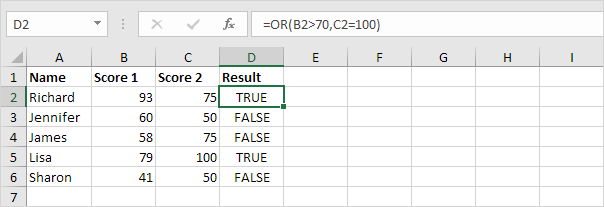
2. Under Customize the Ribbon, on the right side of the dialog box, select Main tabs (if necessary).
3. Check the Developer check box.

4. Click OK.
5. You can find the Developer tab next to the View tab.

Command Button
To place a command button on your worksheet, execute the following steps.
1. On the Developer tab, click Insert.
2. In the ActiveX Controls group, click Command Button.
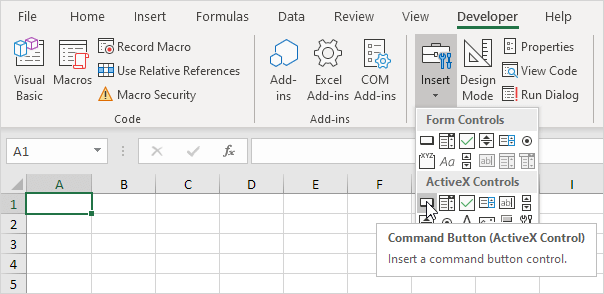
3. Drag a command button on your worksheet.
Assign a Macro
To assign a macro (one or more code lines) to the command button, execute the following steps.
1. Right click CommandButton1 (make sure Design Mode is selected).
2. Click View Code.
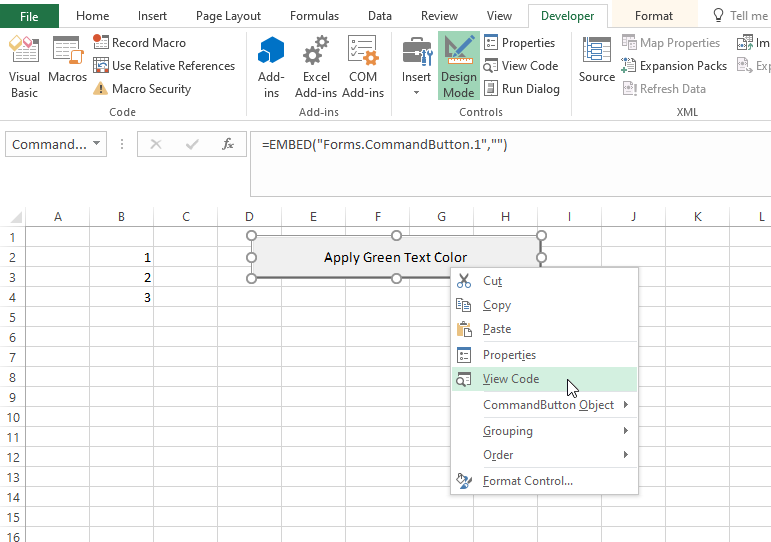
The Visual Basic Editor appears.
3. Place your cursor between Private Sub CommandButton1_Click() and End Sub.
4. Add the code line shown below.
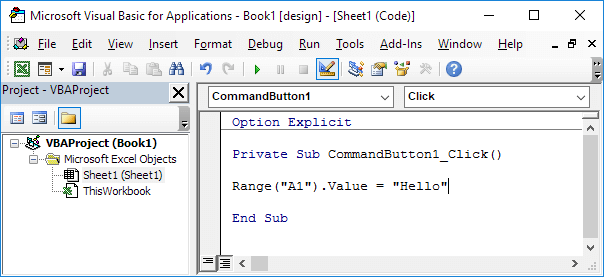
Note: the window on the left with the names Sheet1 (Sheet1) and This Workbook is called the Project Explorer. If the Project Explorer is not visible, click View, Project Explorer. If the Code window for Sheet1 is not visible, click Sheet1 (Sheet1). You can ignore the Option Explicit statement for now.
5. Close the Visual Basic Editor.
6. Click the command button on the sheet (make sure Design Mode is deselected).
Result:

Congratulations. You’ve just created a macro in Excel!
Visual Basic Editor
To open the Visual Basic Editor, on the Developer tab, click Visual Basic.

The Visual Basic Editor appears.
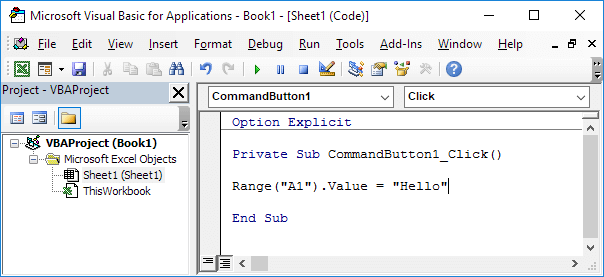
Troubleshooting Macro
If you’re having trouble with a macro, here are a few things you can check:
- Ensure the macro is saved.
- Make sure the macro is enabled.
- Ensure the macro is assigned a keyboard shortcut.
- Make sure the macro is compatible with the version of Excel you’re using.
If you’re still having trouble, you can search for help online or contact Microsoft support.
Conclusion
Macros can be a powerful tool for automating tasks in Excel. By learning how to create and use macros, you can save time and improve your productivity.
| Next Chapter: MsgBox |